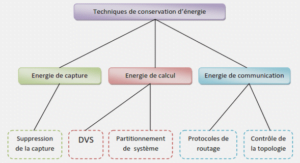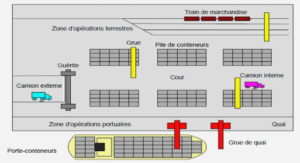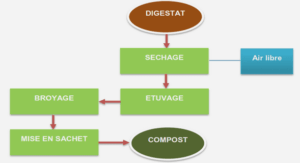SENSITIVITY ANALYSIS ON VULNERABILITY MODELLING
Damage analysis
Building performance can be measured by mechanical quantities related to the physical condition of the building following an earthquake. In evaluating structural performance, it is of interest that these mechanical quantities do not exceed certain threshold levels defined as damage states. A damage state represent the condition where damage occurred has a direct impact on building use after an earthquake and on the expected losses. For example, a complete damage state corresponds to the demolition of the building.
Well-defined and realistic damage states thresholds are essential for vulnerability modelling.
Damage states thresholds are identified using quantitative parameters that correlate best with damage. Inter-story drift ratio and building roof displacement are widely used parameters for damage assessment of structures and are used to develop displacement fragility functions taking into account inherent uncertainties.
Damage state thresholds for masonry buildings are typically identified based on experimental drift ratios of masonry walls tested under cyclic loading (Borzi et al., 2008; Restrepo-Velez, 2003, Ruiz-García and Negrete, 2009; Bosiljkov et al., 2010). Figure 1.14 shows an example for the identification of drift thresholds corresponding to flexural cracking (Hf), shear cracking (Hdt), maximum shear strength (Hmax), and ultimate deformation at 20% loss of strength (Hmax). They are considered as respective damage thresholds for the slight, moderate, extensive, and complete damage states. Based on several test results, the damage state thresholds can be represented in a probabilistic format as a fragility function (Figure 1.15). Typically, the fragility functions are represented by a lognormal probability distribution with a median value and a standard deviation. Lognormal distribution is typically used since it has shown a good fit for structural damage distribution (Wen et al., 2004).
For an ESDOF idealization of the building, the drift-based damage fragility functions can also be converted to spectral displacements fragility functions (Figure 1.16) In this case, they can be convolved directly with the results of the inelastic spectral displacement response from structural analysis (Kircher et al., 1997a, FEMA, 2003, Erdik et al., 2010).
Another approach to identify damage states of the buildings is based on the developed capacity curves (Lang, 2002; Rota et al., 2010, Frankie, 2010). Figure 1.17 shows an example of an approach proposed by Rota et al. (2010). For the slight and moderate damage states, the global damage threshold are recorded on the capacity curves as displacements at which the first masonry wall reached flexural cracking and the first masonry wall reached the shear cracking, respectively. The extensive damage state is identified at the attainment of maximum base shear capacity of the building whereas the complete damage state refers to displacement corresponding to 20% reduction in base shear. The uncertainty in the damage states thresholds are quantified by conducting several analyses using a range of material properties of the building class.
Loss analysis
The objective of the loss analysis is to relate the expected structural damage to the economic losses due to repair or replacement costs of buildings. This is achieved by applying a so called damage factor (DF) which relates the cost of repair to the cost of replacement cost of the building and which corresponds to reaching of each damage state (i.e. slight, moderate, extensive, complete). The results are summed up to give a mean damage factor (MDF) which when multiplied by the value of the building provides an estimate of economic losses.
Kircher et al. (1997b) proposed DFs calibrated to reflect observed losses following recent earthquake events in California as percentage of total replacement costs: 2% for slight damage, 10% for moderate damage, 50% for extensive damage, and 100% for complete damage. Based on expert opinion and observational and estimated damage cost data available for Turkey, Yucemen (2005) applied different DFs: 5% for slight damage, 30% for moderate damage, 70% for extensive damage and 100% for complete damage. In order to verify these damage factors for Canada, extensive economic data related to damage and repair would need to be gathered, which is beyond the scope of this study.
Review of existing vulnerability models for stone masonry buildings
In this section, the available vulnerability models and input parameters for stone masonry buildings are reviewed and discussed.
The vulnerability model implemented in the North American regional seismic risk assessment, Hazus (FEMA, 2003) and the earthquake loss estimation routine ELER (Erdik et al., 2010) both apply the NLSA structural analysis method as presented in section 1.3 (Figure 1.4). The required input parameters are the capacity curves and displacement fragility functions for the ESDOF model of building classes along with a response spectral representation of the ground motion input. It has also to be noted that these tools do not explicitly develop fragility and vulnerability functions in terms of a structure-independent intensity measure (e.g. spectral acceleration). For a given earthquake scenario, these tools conduct the structural, damage and loss analyses for each building class in the inventory at each location. Depending on the size of the study area and the density of the built environment, this usually requires significant computational time. However, if the existing buildings are grouped into representative building classes and if sets of fragility and vulnerability functions in terms of a structure-independent intensity measure that directly relates damage and costs to the input ground motion are pre-developed for each building class, the computational time for conducting regional risk assessment is significantly reduced (Porter, 2009).
Hazus reflects the vulnerability information of the construction types in the United States (FEMA, 2003). It considers only one structural class for unreinforced masonry buildings, brick masonry structures with vulnerability information mainly based on expert judgment and observation data (Kircher et al., 1997a). ELER alternatively considers stone masonry buildings with vulnerability information mainly derived from observation damage data collected from Italian earthquakes and expert judgment (Giovinazzi, 2005; Erdik et al, 2010).
Figure 1.18 and Figure 1.19 shows the displacement fragility curves and capacity curves computed from the parameters given in Hazus and ELER technical manuals. These figuresillustrate the disparities between Hazus and ELER in the definition of the displacement fragility functions and capacity curves, respectively. This justifies the importance of the development of region specific vulnerability input parameters.
Figure 1.20 presents two sets of analytically developed seismic fragility functions for stone masonry buildings available in the literature in terms of a structure-independent intensity measure (PGA). Figure 1.20a shows a seismic fragility function obtained using the NLTHA structural analysis method combined with a simulation based analytical representative model of a three story masonry building constructed from tuff stones available in Italy (Rota et al. 2010). Figure 1.20b shows a seismic fragility function generated by NLSA structural analysis method combined with a simplified mechanics-based analytical model for two story stone masonry buildings also in Italy (Borzi et al. 2008). Due to the considered structural parameters, these sets of fragility functions are limited in their application to stone masonry classes typically found in Italy. Moreover, the ground motion input used to develop these functions is not necessarily compatible with the seismo-tectonic setting in other regions such as Eastern Canada.
Summary
Vulnerability modelling is the key component is regional seismic risk assessment studies of existing buildings. It consists of physical damage and economic loss analyses. The physical damage is generally represented through a set of fragility functions assigned to given damage state whereas economic losses are defined with vulnerability functions. These functions are commonly given in terms of a structure independent intensity measure (e.g. peak ground acceleration or spectral acceleration at a particular period).
|
Table des matières
INTRODUCTION
CHAPTER 1 LITERATURE REVIEW
1.1 Introduction
1.2 Fragility and vulnerability functions
1.3 Analytical vulnerability modelling and uncertainty quantification
1.4 Structural analysis
1.5 Structural modelling of seismic capacity for masonry buildings
1.5.1 Seismic response mechanisms of masonry buildings
1.5.2 Capacity modelling methods
1.6 Damage analysis
1.7 Loss analysis
1.8 Review of existing vulnerability models for stone masonry buildings
1.9 Summary
CHAPTER 2 DISPLACEMENT BASED FRAGILITY ANALYSIS
2.1 Introduction
2.2 Analytical displacement fragility functions
2.3 Inventory
2.4 Displacement based damage model
2.5 Capacity model
2.6 Seismic demand model
2.7 Fragility based damage assessment
2.8 Summary and conclusions
CHAPTER 3 HAZARD COMPATIBLE VULNERABILITY MODELLING
3.1 Introduction
3.2 Vulnerability modelling procedure
3.3 Scenario based vulnerability assessment
3.4 Summary and conclusions
CHAPTER 4 SENSITIVITY ANALYSIS ON VULNERABILITY MODELLING
4.1 Introduction
4.2 Variation in structural parameters
4.3 Variation in damage parameters
4.4 Variation in loss parameters
4.5 Sensitivity analysis results
4.6 Discussion of the sensitivity analysis results
4.6.1 Structural parameters
4.6.2 Damage parameters
4.6.3 Loss parameters
4.7 Summary and conclusions
CHAPTER 5 SEISMIC RISK ASSESSMENT OF EXISTING BUILDINGS IN OLD QUÉBEC CITY
5.1 Introduction
5.2 Seismic risk assessment input models
5.2.1 Inventory
5.2.2 Seismic hazard
5.2.3 Vulnerability
5.3 Results
5.4 Comparison with HAZUS
5.5 Summary and conclusions
SUMMARY, CONCLUSIONS AND RECOMMENDATIONS
APPENDIX I DISPLACEMENT BASED FRAGILITY ANALYSIS RESULTS
APPENDIX II COMPUTATIONS FOR THE SEISMIC HAZARD COMPATIBLE VULNERABILITY MODELLING
APPENDIX III HAZARD COMPATIBLE FRAGILITY FUNCTIONS FOR BUILDING TYPES IN OLD QUEBEC CITY
APPENDIX IV ATKINSON AND BOORE (2006) GROUND MOTION
PREDICTION EQUATION FOR EASTREN NORTH AMERICA
APPENDIX V COMPARISON WITH HAZUS SOFTWARE
LIST OF BIBLIOGRAPHICAL REFERENCES
![]() Télécharger le rapport complet
Télécharger le rapport complet






